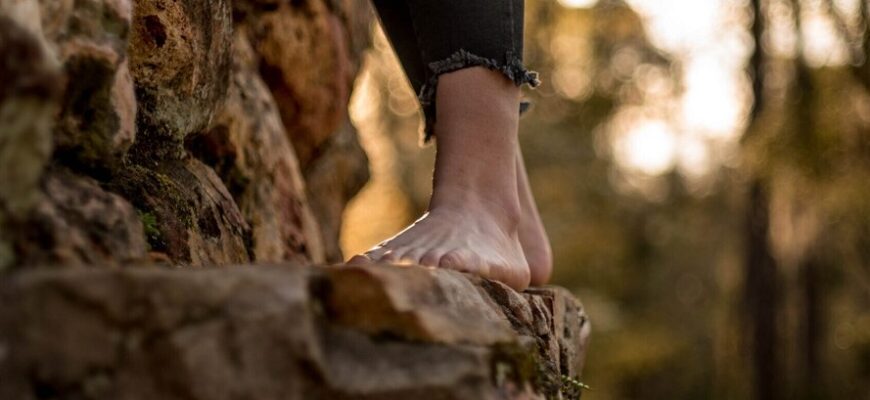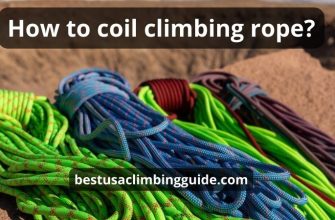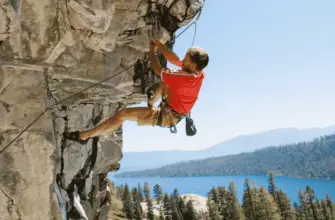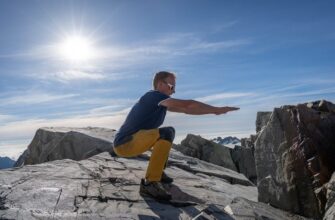Barefoot Rock Climbing: yes or no? There were no shoes in existence long before. People were forced to walk around without shoes. They may have also scaled trees and mountains while wearing no shoes.
Today, however, is a totally different period. There are several shoes available that are designed for various uses. There are heels that were made exclusively for fashion, or demons as women refer to them. Some shoes are designed to help us avoid falling and smashing our heads while navigating snow and ice. And now for the important part: there are various shoes made specifically for climbing.
Therefore, the question “Can you rock climb barefoot?” is answered in the affirmative. But does that suggest you ought to? No.
There is a reason why shoes were created. They were created to protect your feet and coordinate with them. And they are important, particularly for rock climbing. Therefore, why not take advantage of all opportunities that present themselves to climb higher or accomplish new goals?
When rock climbing, shoes also help you gain more grip. In turn, this prevents you from getting hurt or straining anything. Additionally, you might hurt your feet or rip a toenail or other things.
Rock climbing can be done without shoes; however, it is not advised. Read on to discover more.

- Indoor climbing barefoot
- Reasons not to climb barefoot
- Not hygienic
- Climbing shoes can help you to be effective
- Pluses of rock climbing barefoot
- It is feasible
- It costs less than climbing in rock climbing shoes
- It makes the task more difficult
- It’s more natural
- Minuses of climbing barefoot
- Other risks of climbing barefoot
- Barefoot rock climbing technique
- Using regular shoes to climb
- Are you supposed to be barefoot in climbing shoes?
- Alternatives to barefoot climbing
- Who was brave enough to climb barefoot?
- Nguyen Vu
- Charles Albert
- Conclusion
- FAQs
Indoor climbing barefoot
In most cases, trying new things while climbing indoors may sound like fun and a good idea.
However, it is not recommended to attempt barefoot climbing indoors at all.
We’ll go over all the reasons why you should never climb inside without shoes.
Reasons not to climb barefoot
Not hygienic
Some gyms might let you attempt climbing without shoes, so look around. It is best to review the regulations in advance. Everything will be detailed in the set of regulations. In addition to the rules, most gyms forbid climbers from doing so because it is utterly unclean.
Whether you take care of your feet or not is irrelevant. It is about those who are close to you. If you were to get harmed while climbing barefoot and the gunk from your feet stuck to the walls, it could spread to other climbers. Not only that but perspiration and bacteria are already covering the walls. The wall turns toxic when you add foot goop to it.

Climbing shoes can help you to be effective
Your toes will remain together till you take your next step thanks to the shoes. Additionally, wearing shoes will spare you the agony that results from climbing barefoot. In addition to being uncomfortable, it can also lead to joint issues.
In gyms, barefoot climbing is undoubtedly prohibited, but you can try it outside. But you must always wear shoes. They may occasionally be painful, but they will keep your priceless climbing feet from stepping on anything pointy or spiky. That could send you plummeting to the ground, shocking your belayer and giving them less time to assist you.
Finding the perfect shoe size for your feet is crucial because wearing the wrong pair will make climbing tougher.
Pluses of rock climbing barefoot
To be perfectly honest, wearing shoes that were created specifically to improve our rock climbing abilities has many advantages over climbing barefoot. Nevertheless, there are a few features that could be viewed as benefits, and we’ll list them here.
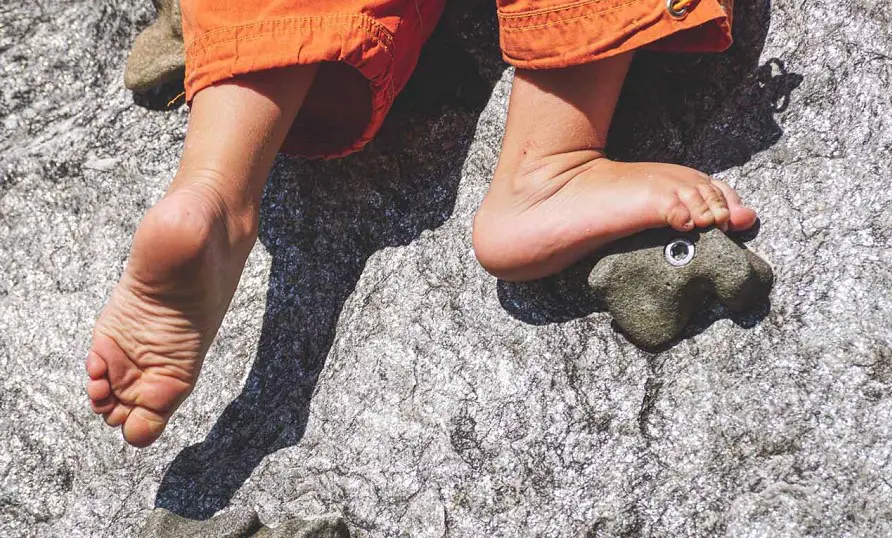
It is feasible
Although stating the obvious, being repetitive, and bordering on the absurd, the fact that one may climb without shoes serves a purpose. Have you ever made it all the way to the crag only to realize you left your shoes at home?
Well, I have, and I am aware of others who have.
In that case, you will undoubtedly be unable to crush at your level, but at least you can still complete a few simple climbs while barefoot for amusement.
It costs less than climbing in rock climbing shoes
You will occasionally go through new pairs of climbing shoes throughout your rock climbing career because they can be pretty pricey. If you merely use your feet to climb, you won’t need to spend money on replacing or mending worn-out footwear.

It makes the task more difficult
Since wearing shoes makes climbing much simpler, safer, and more effective, switching abruptly to climbing without them is a simple and quick approach to give your climbing a new challenge.
It’s more natural
I appreciate the sensation of contacting the outside world with my skin as opposed to through my shoes; hence, I pretty much always prefer to walk barefoot. And I am aware that I am not alone. Like barefoot walking, barefoot climbing can increase your sense of earthiness, and be more sensible.

Minuses of climbing barefoot
Here is the opposite view of climbing barefoot. Rock climbing shoes are designed specifically for climbing; thus they should offer some cool benefits to appeal to the majority of climbers. The following are a few key benefits of shoes made specifically for climbing:
When rock climbing, they shield the skin from the rough or even sharp rocks that are there. The primary function of daily shoes is to shield the feet from the outside world, yet the outside world can be particularly harsh when rock climbing.
Rubber is used in them to increase friction with the rock, giving you a greater grip and enabling the shoe to adhere to a narrow ledge.
In contrast to employing a single toe, they concentrate the force of the toes into a single structure, distributing tension among the toes and enabling much more force to be given at a precise place and with a better grip.
They are sturdy enough to allow you to tread on tiny ledges that would be difficult to utilize without the additional layer of stability, which is not possible when utilizing merely soft, flexible skin and flesh.

Other risks of climbing barefoot
Rock climbing shoes protect your feet, as we’ve already discussed, but because this is such a crucial point, we really want to stress it. You run the danger of suffering a variety of ailments if you climb without shoes.
- The sharpness and roughness of the rock will hurt your feet even in the best-case scenario, where nothing bad occurs, as it is constantly being damaged, albeit in a minor way.
- If something goes wrong, you run the danger of losing a nail and losing skin if your foot slips. And losing your entire toenail might be excruciatingly painful, which will put an end to your climb for the day.
- Carrying your entire body weight on one toe puts additional strain on your tendons, which can lead to tendinitis and a number of other long-term health issues.
- The impact of a fall is greater. When bouldering, it’s not that obvious, but taking a lead falling barefoot, and ricocheting toward the wall might easily cause an injury if there is nothing reducing the force of impact.
- The foot also possesses two major arteries (the posterior and anterior tibial arteries) and a lot of tendons that could sustain serious harm in the event of a particularly bad, unexpected fall.
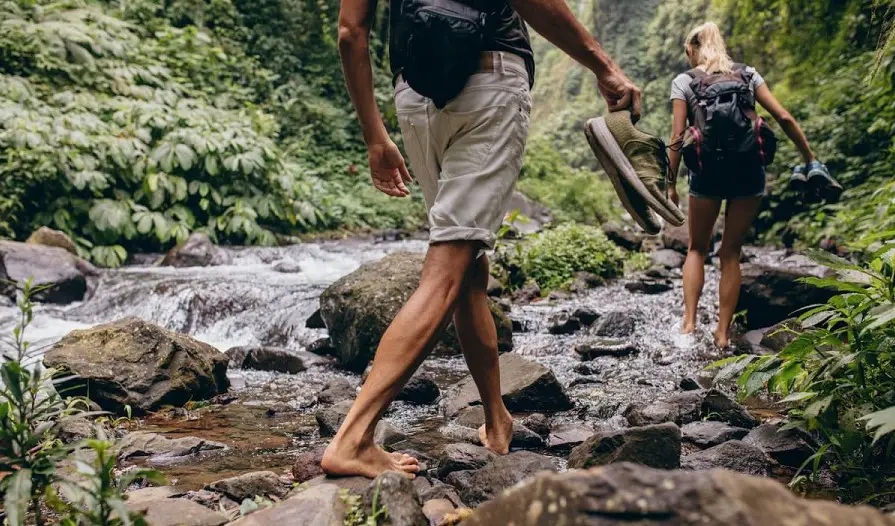
Barefoot rock climbing technique
There are a few things you should be aware of before trying your hand—or more accurately, your feet—at barefoot climbing. You most likely need to reevaluate your entire approach if you want to climb as well as Charles Albert or Skip Guerin.
You won’t have as much access to the outer edge, heel hook, toe press, or foot jam as you would when wearing shoes, to start.
The three main elements of your footwork will be edging on your big toe, crimping edges with all of your toes together, and gripping features between your first and second toes.
After a few weeks of climbing without shoes, I bet you will start to feel the improved strength in your toes. At first, these new approaches may feel quite foreign. This improved food strength will pay you when you put your shoes back on, even if you don’t wish to climb solely barefoot.

Using regular shoes to climb
While it is possible to climb in regular tennis shoes outside or at a climbing gym, your abilities will be significantly diminished, and you run the risk of injuring yourself.
When climbing, precise movements are necessary because a difference of even a fraction of an inch can cause slipping and falling. Over the years, climbing shoes have been created and engineered to meet the unique needs of climbers.
Unlike climbing shoes, tennis shoes have a soft sole that typically extends a little bit away from your foot. The soft rubber will give way if you try to edge or step with the side of your foot, causing you to fall.
You won’t be able to dig your toe into a little ledge or crack because your toes probably don’t touch the end of your tennis shoes. Unless you are wearing a quality pair of approach shoes, the rubber on the bottoms of your shoes is most likely worn out and useless against rock or plastic.
Although falling while tied isn’t particularly dangerous, an unexpected fall could result in you hitting your knees against the wall. You’ll get scrapes and bruises and most likely won’t have fun. The best option is to just hire a set of shoes from the climbing gym for $4–$5 or to invest a little more in a pair for yourself.

Are you supposed to be barefoot in climbing shoes?
It’s also important to note that socks are frequently worn with climbing shoes, in addition to the fact that wearing shoes is needed when climbing indoors.
We all have to share for the same basic hygienic reasons.
The arguments made by those who are staunchly against wearing socks with climbing shoes are very powerful. However, if you consider the other side of the debate, you can understand why some individuals, including seasoned climbers, will go rock climbing in their socks.
One of the main purposes for wearing socks with any pair of shoes is to soak up any sweat that may accumulate while wearing them.
Additionally, socks can provide some internal cushioning. According to this reasoning, it makes sense to wear socks with your climbing shoes. Although they are by no means uncomfortable, climbing shoes include firm rubber for the soles and sides and synthetic or leather uppers.
Would you wear them if you weren’t climbing, though? Absolutely not. They may feel more comfortable wearing socks.

Alternatives to barefoot climbing
There is one key option that gives you the feeling of climbing barefoot while preventing you from actually climbing barefoot.
You can wear Vibram Five Fingers, which are flexible sock-like shoes with a small coating of hard rubber covering each finger.
These shoes allow you to maintain some of the sensitivity and flexibility of having bare feet while adding some degree of protection.
The Vibram FiveFingers Men’s V-Trail 2.0 Trail Running Shoes are arguably the best for climbing because they were created with mountain conditions in mind, though there are several variations of the shoe geared toward various activities.

Who was brave enough to climb barefoot?
Nevertheless, there are several well-known barefoot climbers, both in bouldering and wall climbing shoes make climbing considerably simpler and more effective.
Nguyen Vu
Famous Vietnamese climber Vu Nguyen is a guide with Asia Outdoors and likes to climb on Cat Ba Island. He is best known for being a strong climber who frequently goes shoeless while doing so.
Few people have the ability to climb high, but Vu Nguyen does so on many of the deep-water soloing locations the island has to offer, including the limestone sports routes in Butterfly Valley.
Charles Albert
Young French boulderer Charles Albert learned to climb in and around Fontainebleau. He is most likely the best-known barefoot climber in the entire globe.
He began climbing barefoot while playing around with his friends as a method to include cool and entertaining difficulties (such as bouldering V9 blindfolded). He eventually switched to climbing barefoot as his primary focus, and he excelled at it.

Conclusion
Although it is possible to climb barefoot, most people, especially specialists, do not advise it. While climbing barefoot could seem like a fascinating challenge, you’ll leave yourself more vulnerable to damage because your toes must withstand the strain on their own.
If you don’t fall off the rock first, the agony of having a toenail torn off your foot while climbing can be so crippling that you’ll need to descend off the rock immediately.
The pebbles’ jagged edges can injure your feet as well. We understand if you need to return to the ground and make contact with it, but before you climb, please do so securely on level, firm ground.

FAQs
- Are you supposed to rock climb without socks?
Perception is one of the primary issues with climbing while wearing socks. Since serious climbers seldom wear socks with their climbing shoes, it’s kind of like wearing a large “newbie” flag on your back.
This can entice individuals to visit and point out your errors. In an effort to spare you the strange glances and judgment, gyms may occasionally inform you when you rent shoes that people don’t wear socks. This is only up to you, whether should you do rock climbing barefoot or not.
- Can you go bouldering barefoot?
The response is affirmative for regular climbers. Special climbing shoes and bouldering shoes perform the same functions for both types of climbing. Even though rock climbing shoes are worn by the vast majority of boulderers, some do climb barefoot.
Charles Albert, a French climber, excels at boulder problems and prefers to climb barefoot. He asserts that climbing without shoes, among other things, improves his sense of the rock and encourages him to use more of his legs.

